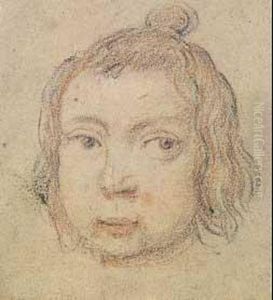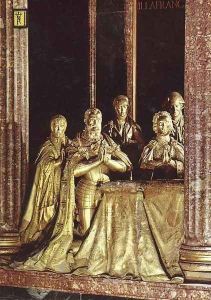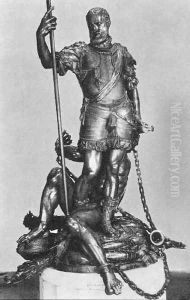Pompeo Leoni Paintings
Pompeo Leoni was an Italian sculptor and medallist who is best known for his work in Spain, where he was one of the leading artists of his time. Born in 1533 in Menaggio, near Como, in the Duchy of Milan, Leoni was the son of Leone Leoni, an accomplished sculptor and medalist himself. Under the tutelage of his father, Pompeo developed his skills in the arts, particularly in sculpture.
The Leoni family moved to the Habsburg Spanish court, which proved to be a significant turning point in Pompeo's career. There, he was exposed to the rich art scene and gained patronage from the Spanish royalty and nobility. His style was influenced by Italian Renaissance masters, but he also incorporated elements of the Mannerist style, which was characterized by artificial elegance and elongation of figures.
Pompeo Leoni's work in Spain included a variety of projects ranging from royal funerary monuments to small-scale medals and statuettes. One of his most notable works is the tomb of Emperor Charles V and his son Philip II in the Basilica of San Lorenzo de El Escorial, which was commissioned by Philip II. This grandiose project took many years to complete and is considered one of his masterpieces.
Leoni also created sculptures for the Alcázar of Madrid and the Descalzas Reales Monastery, among other locations. His bronze sculptures often displayed a dynamic and dramatic quality, with meticulous attention to texture and detail. Despite his success, little is known about his personal life, and much of what is known about his artistic output comes from the works he left behind and contemporary records.
Pompeo Leoni died in Madrid in 1608, leaving behind a legacy of influential work that would impact Spanish sculpture for generations. His approach to sculpture, which combined Italian Renaissance techniques with Spanish artistic traditions, helped to foster the development of a distinct Spanish style of sculpture in the late 16th and early 17th centuries.


